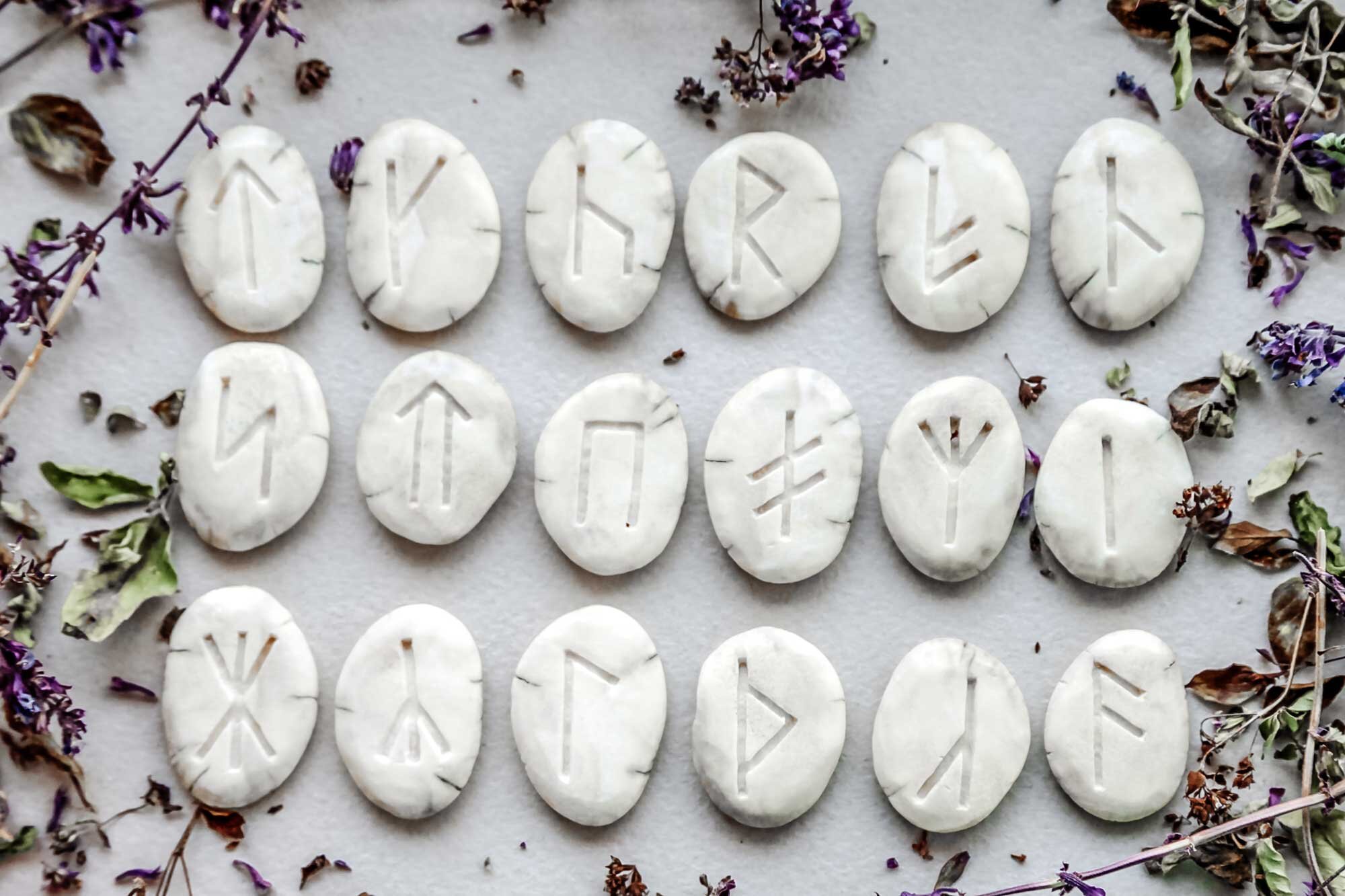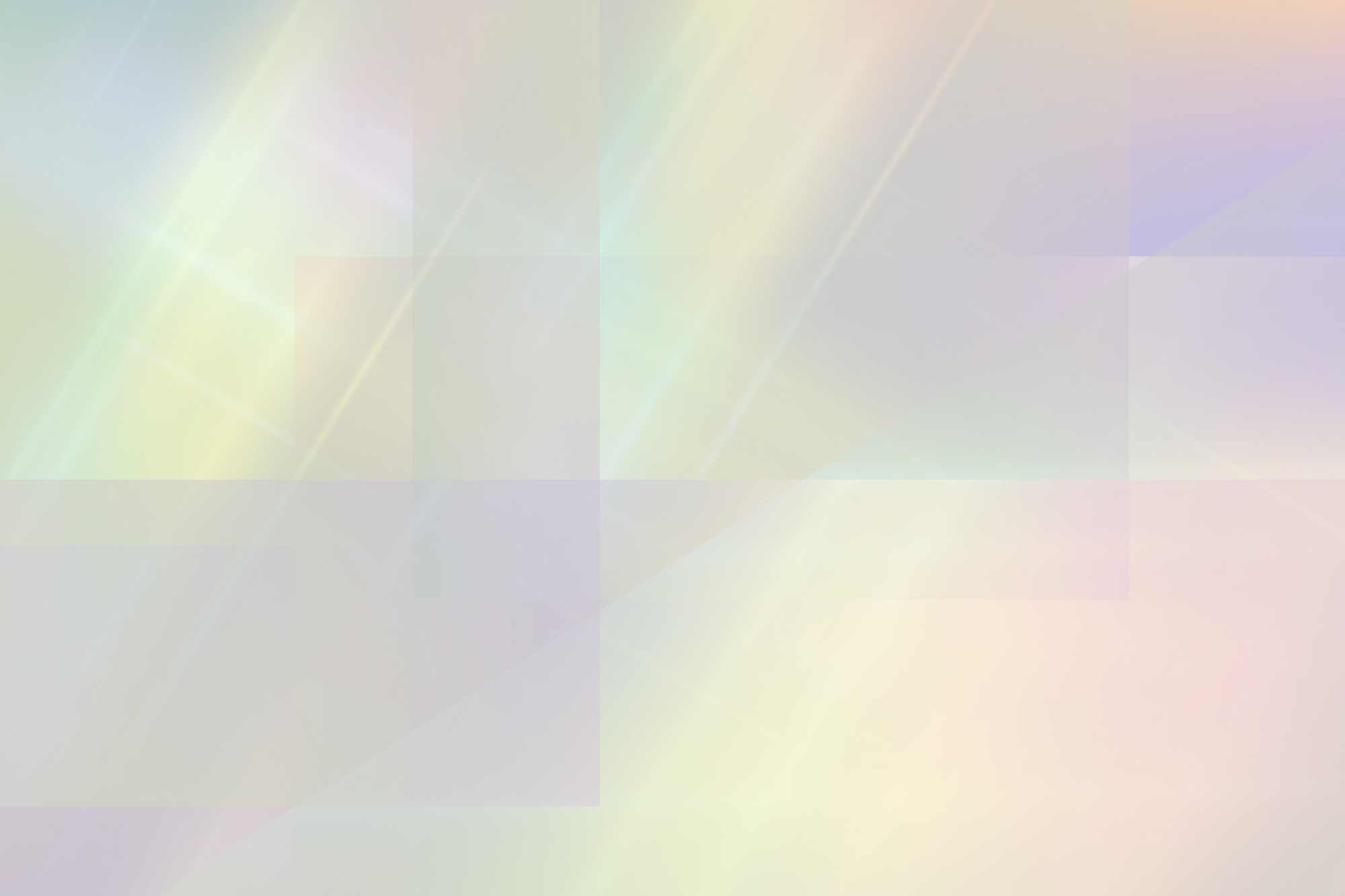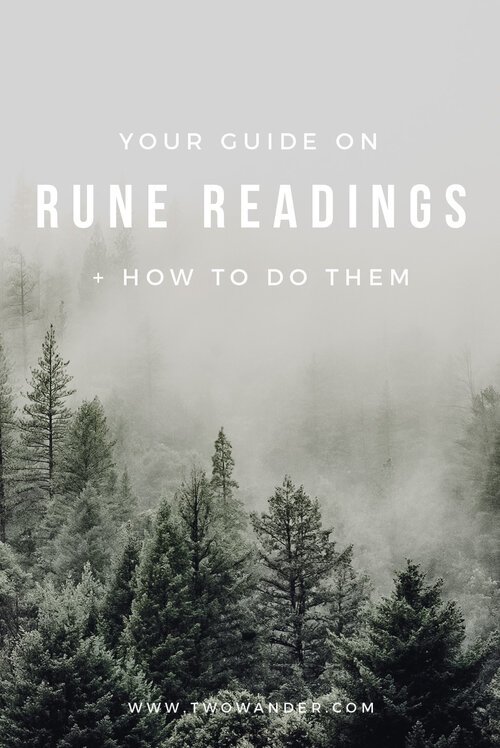The Elder Futhark Norse Runic Alphabet and How To Do A Rune Reading
This post might contain affiliate links. If you choose to purchase through them, we may receive a small commission at no extra cost to you. By using these links you are directly supporting us to create mystical musings, thank you!
The Elder Futhark Norse Runic Alphabet
The runic alphabet is a proto-Norse language that was in use before the widespread adoption of Latin across Europe in roughly the 1st century AD. The Elder Futhark runes alphabet is a sub-set of 24 letters and runic inscriptions have been found on stones, wood, bones, tablets, and other objects to denote commercial transactions, political and legal matters, in magic, divination and spell work, on gravestones, as protection talismans and amulets, as graffiti, and as craft sigils of artisans (much like we use our own alphabet today). This then later developed into other runic alphabets, such as the Younger Futhark alphabet in the 9th Century Viking Age with only 16 runes used.
The word rune itself means whisper, secret, and mystery, and today we use rune stones as a method of divination, similar to Tarot cards, to connect to our internal wisdom and intuition as well as the collective unconscious, Higher Self, and Spirit Guides. Each rune is not only a letter, it also has a meaning behind it, similar to hieroglyphics.
The 24 letters of the Elder Futhark runic alphabet are divided into 3 sets of 8 letters each, known as “Aetts”. Each Aett belongs to a different Nordic Deity from Norse mythology and details the journey of life from birth and material possessions, through to struggles, hardships, growth and maturation, to the end of a cycle and completion, spiritual attainment, and legacy.
This post simply has an overview of the Elder Futhark runic alphabet letters and literal translation, to read more about their esoteric meanings in detail, check out our post on How To Read Rune Stones.
Freyr’s Aett
This is the first Aett, dedicated to the Nordic God of Peace, Freyr. The first six runes of this Aett spell out the word "futhark” and is where it gets its name from, similar in the way we say “QWERTY” keyboard.
FEHU ᚠ - This first rune corresponds to the letter F and is literally translated as “cattle”
URUZ ᚢ - This is the letter U and represents the aurochs, the ancient bull
THURISAZ ᚦ - This is equivalent to the sound TH and is translated as “hammer”, thorn, or “giant”
ANSUZ ᚫ - This is the letter A and is translated as “God” or “message”
RAIDHO ᚱ - This is the letter R and means “road”, “riding”, or “journey”
KENAZ ᚲ - This is known as K or C and means “torch”
GEBO ᚷ - The letter G, translated as “gift”
WUNJO ᚹ - This is the letter W and is translated as “joy”, its symbol represents a clan’s flag
Heimdall’s Aett
The second Aett is dedicated to Heimdall, the watchman of the Gods.
HAGALAZ ᚺ - This is the letter H and translates to “hail”
NAUTHIZ ᚾ - The letter N, it signifies “needs” or “hardship”
ISA ᛁ - This is the letter I and means “ice”
JERA ᛃ - This is the letter J and translates as “year” or “harvest”
EIHWAZ ᛇ - This is the equivalent of the letter ï (æ) and symbolises the yew/ash tree.
PERTHRO ᛈ - The letter P has an unknown meaning but may possible translate as “pear tree” or “luck”
ALGIZ ᛉ - This a Z and is translated as “elk” meaning “protection” or “defense”
SOWILO ᛋ - The letter S, it symbolises the sun
Tyr’s Aett
The final Aett is dedicated to Tyr, the God of War.
TIWAZ ᛏ - This is the letter T and relates to the God Tyr/Tiwaz
BERKANA ᛒ - The letter B, it means “birch” and represents birth
EHWAZ ᛖ - The letter E, it represents “horse”
MANNAZ ᛗ - This is the letter M and means “man”
LAGUZ ᛚ - The letter L, this translates as “lake”, “water” and possible “leek”
INGWAZ ᛝ - This is ŋ equivalent to the sound -ng at the end of a word. It relates to the God of Fertility, Ing/Inguz/Yngi/Ingwaz
OTHALA ᛟ - This corresponds to the letter O. It represents inheritance and legacy. Sometimes these last two runes are exchanged in their order (unfortunately this symbol has been co-opted by Neo-Nazis so caution is required with it)
DAGAZ ᛞ - This is the letter D and is translated as “day”
There is also an optional blank rune that is sometimes added in but is not a part of the original practice.
If you’d like some ideas for how to use rune stones, read our post on How To Make Sigils and Bind Runes!
How To Cast Runes And Do A Reading
Although historically runes were more traditionally used as a normal alphabet, and if they were used in any “magical” sense, such as in the creation of amulets, they were no more special or likely to be chosen over a Latin or Greek letter. Nonetheless, it is said that the ancient way of rune casting (reading) was done by a rune reader throwing them onto a white silk cloth from a runes pouch with their eyes facing towards the sky and the Gods, so as not to influence the reading through any bias. Then, only the upturned runes would be read. Today, the preferred method of reading runes is usually done more like a Tarot or oracle card reading by intuitively selecting each rune stone and laying it out into a “spread”.
When choosing which runes to use, you can go for the traditional stone or wood carvings, or different types with crystals (which I prefer) or cards. Or you can make your own! Simply gather up 24 pieces of similar-sized objects and engrave/write/paint a runic letter on to each of them, you can also make them from clay if you can’t find them. To use them on their own as sigils, rather than in a reading, you can etch them onto candles, write them on post-it notes as good luck charms, or any other way you feel called to.
How To Do A Rune Reading
STEP 1: Before you begin using runes, like all divination methods, it’s recommended to clear them of any lingering energies, such as by placing them under the sun or moonlight, burying them in salt, or smoke cleansing them. You can also set the scene by lighting a candle, burning incense, or diffusing essential oils etc. Hold your runes pouch in your non-dominant hand and take a few big, deep breaths to ground and centre yourself, and clear your mind. If you like, you can envision a cord or roots grounding you to the centre of the earth and/or a bright, white light cleansing the runes and your aura. You can also call upon the deities, your guardian angels, spirit guides, Higher Self, or anything else that resonates with you.
STEP 2: When you’re ready, think about the question you’d like answered or the matter at hand, and pull out the runes from the bag one by one with your dominant hand, citing your specific question or issue they’ll be answering directly beforehand, either out loud or in your head. Lay your runes out into a pre-determined spread or simply pull one rune as a yes/no answer.
STEP 3: Once your runes have been laid out into your chosen spread, interpret them one by one with their literal and figurative meaning, and then what they mean taken together as a whole, weaving a story together. Focus on your intuition and initial gut reaction to them first before looking up their official meanings. Due to their antiquity, rune stone interpretations can vary greatly in some degrees, so going with what resonates most with you is best. If you like, you can record your reading and come back to it at a later date to see how it played out or if any further insights present themselves.
If you like, you can also differentiate between a rune coming out upright or reversed (merkstave). You can do a rune cast to answer specific questions, shed some light on a certain situation, or align them with phases of the moon, seasons etc.
Rune Layouts
3-RUNE SPREAD: This is the classic past-present-future (also known as The Three Norns), situation-advice-outcome, or mind-body-spirit layout. The number 3 was considered a sacred number and so simply using three runes together is said to hold great power. The runes are pulled out horizontally and traditionally read from right to left (although I personally read from left to right).
4-RUNE SPREAD: This is a good spread for gaining some clarity on a situation. Starting at the top and placing them down anti-clockwise, the first rune represents your past desires/influences that relate to the question; the second rune represents the external influences or desires of others that led to the matter at hand; the third rune is your present desires; and the fourth rune is the future potential outcome/advice.
6-RUNE SPREAD: The Runic Cross. The first 3 laid out horizontally relate to the past, present, and future, while the next 3 are pulled vertically from top to bottom to form a cross. They represent the unconscious or background reasons for the matter at hand in the 4th rune, obstacles or difficulties with the 5th rune, and suggested advice in the 6th rune.
Feel free to create any spread you feel suits your needs better, or adapt them from Tarot or oracle card spreads! This is an intuitive practice after all and one to connect you to yourself and own internal guidance.
If you’d like me to access the magic of their wisdom for you, book yourself in for a personalised Rune Reading now!
For more advice on understanding the meaning of the runes, their history, deity association, how to read runes, layouts, and more, check out our Complete Guidebook To The Ancient Rune Stones!
So that’s what the Elder Futhark Norse runic alphabet is and how to do a rune reading. I hope it’s useful for you, let me know how you get on with it in the comments section below! Or if you have anything else to add :)
If you’d like to explore other divination methods, check out our posts on The Complete List of Tarot Cards, How To Use A Pendulum, How To Read Your Tea Leaves, or What You Palm Lines Say About You!


















